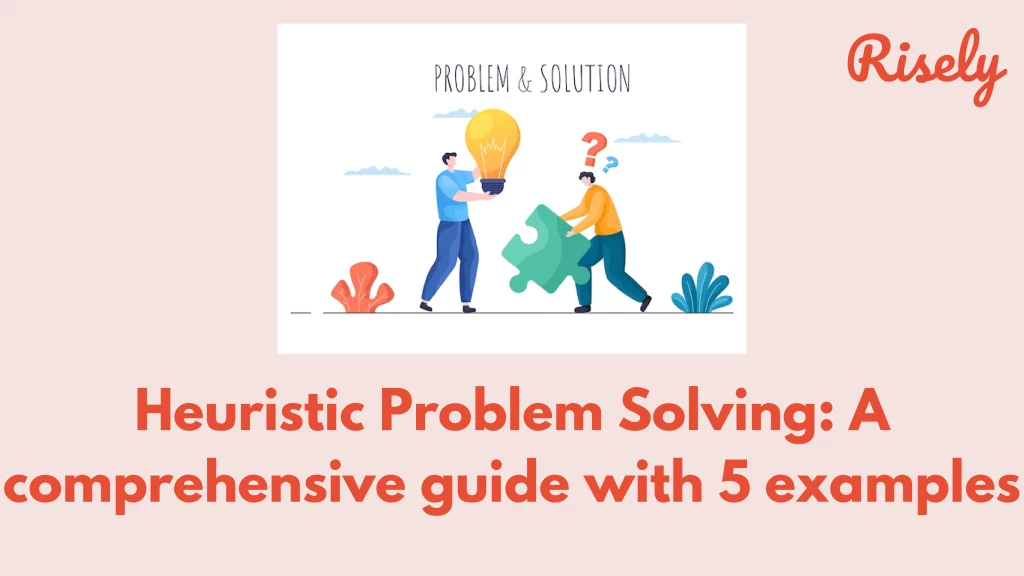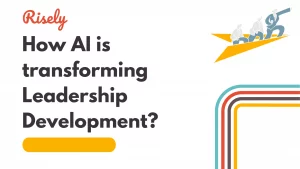Do you find yourself struggling with problem solving? Do you often wonder if you have made the right choice? The good news is that there is a solution to these problems. Using heuristics, you can make better decisions and solve problems easier. In this blog, we will discuss what heuristics are and their advantages and disadvantages. We will also delve deeper into heuristic problem solving, giving examples of using this approach to solve problems and make informed decisions. By the end of this blog, you will better understand heuristics and how to apply them in your daily life to make better decisions.
What are Heuristics?
Heuristics can be described as mental shortcuts used to simplify and speed up the process of problem-solving and probability judgments. Heuristics simplify complex scenarios or situations to achieve an adequate solution in the short term. They are commonly used in everyday social interactions and professional fields such as law, medicine, social science, behavioral science, economics, and political science. Although heuristics help make quick decisions when limited information is available, they also lead to errors in judgment. Therefore, recognizing the potential pitfalls of relying too heavily on heuristics when making important decisions is essential. However, when used appropriately, heuristics can be a game-changing approach to decision-making that can help individuals and businesses make better and more efficient decisions.Advantages of Using Heuristic problem solving
Heuristic problem-solving strategies are the ones that use practical and intuitive methods to find solutions quickly, efficiently, and effectively. They can be applied to various problems and situations, from daily tasks to business or scientific problems. Here are some advantages of using heuristic problem solving:- Speed: Heuristics are designed to find solutions quickly, saving time in problem solving tasks. Rather than spending a lot of time analyzing every possible solution, heuristics help to narrow down the options and focus on the most promising ones.
- Flexibility: Heuristics are not rigid, step-by-step procedures. They allow for flexibility and creativity in problem-solving, leading to innovative solutions. They encourage thinking outside the box and can generate unexpected and valuable ideas.
- Simplicity: Heuristics are often easy to understand and apply, making them accessible to anyone regardless of their expertise or background. They don’t require specialized knowledge or training, which means they can be used in various contexts and by different people.
- Cost-effective: Because heuristics are simple and efficient, they can save time, money, and effort in finding solutions. They also don’t require expensive software or equipment, making them a cost-effective approach to problem solving.
- Real-world applicability: Heuristics are often based on practical experience and knowledge, making them relevant to real-world situations. They can help solve complex, messy, or ill-defined problems where other problem solving methods may not be practical.
Disadvantages of Using Heuristic Problem Solving
While this approach can be effective in certain situations, there are also several disadvantages to using heuristic problem solving, including:- Potential for errors: Heuristic problem solving relies on generalizations and assumptions, which may lead to errors or incorrect conclusions. This is especially true if the heuristic is not based on a solid understanding of the problem or the underlying principles.
- Limited scope: Heuristic problem solving may only consider a limited number of potential solutions and may not identify the most optimal or effective solution.
- Lack of creativity: Heuristic problem solving may rely on pre-existing solutions or approaches, limiting creativity and innovation in problem-solving.
- Over-reliance: Heuristic problem solving may lead to over-reliance on a specific approach or heuristic, which can be problematic if the heuristic is flawed or ineffective.
- Lack of transparency: Heuristic problem solving may not be transparent or explainable, as the decision-making process may not be explicitly articulated or understood.
Heuristic Problem Solving Examples
Here are five examples of heuristics in problem solving:- Trial and error: This heuristic involves trying different solutions to a problem and learning from mistakes until a successful solution is found. A software developer encountering a bug in their code may try other solutions and test each one until they find the one that solves the issue.
- Working backward: This heuristic involves starting at the goal and then figuring out what steps are needed to reach that goal. For example, a project manager may begin by setting a project deadline and then work backward to determine the necessary steps and deadlines for each team member to ensure the project is completed on time.
- Breaking a problem into smaller parts: This heuristic involves breaking down a complex problem into smaller, more manageable pieces that can be tackled individually. For example, an HR manager tasked with implementing a new employee benefits program may break the project into smaller parts, such as researching options, getting quotes from vendors, and communicating the unique benefits to employees.
- Using analogies: This heuristic involves finding similarities between a current problem and a similar problem that has been solved before and using the solution to the previous issue to help solve the current one. For example, a salesperson struggling to close a deal may use an analogy to a successful sales pitch they made to help guide their approach to the current pitch.
- Simplifying the problem: This heuristic involves simplifying a complex problem by ignoring details that are not necessary for solving it. This allows the problem solver to focus on the most critical aspects of the problem. For example, a customer service representative dealing with a complex issue may simplify it by breaking it down into smaller components and addressing them individually rather than simultaneously trying to solve the entire problem.
Conclusion
Heuristic problem solving is a cognitive approach that helps you make quick decisions based on past experiences, rules of thumb, and common judgment. It simplifies complex problems by breaking them down into more manageable chunks. It’s a game-changing approach to decision-making that can help you save time and resources. While it has advantages and disadvantages, heuristic problem solving can be leveraged to solve real-world problems, from business to personal life. This approach can make your decision-making process more effective and productive. To learn more about how you can use heuristic problem-solving in your decision-making process, check out our blog for heuristic problem-solving examples.Test your problem-solving skills for free in just a few minutes.
The free problem-solving skills for managers and team leaders helps you understand mistakes that hold you back.
Frequently Asked Questions
What are the three types of heuristics?
The three types of heuristics are availability heuristic, representativeness heuristic, and anchoring and adjusting heuristic. The availability heuristic is the tendency to make decisions quickly based on what comes to mind. The representativeness heuristic makes judgments based on similarity to a prototype or a stereotype. Finally, the anchoring and adjusting heuristic is the tendency to make decisions based on initial information, which serves as an anchor, and then adjusting from that starting point.
What are the four stages of heuristics in problem solving?
The four stages of heuristics in problem solving are as follows:
1. Understanding the problem: Identifying and defining the problem is the first step in the problem-solving process.
2. Generating solutions: The second step is to generate as many solutions as possible. It’s important not to evaluate them at this stage; just list as many as possible.
3. Evaluating solutions: Evaluate each solution based on its potential risks, advantages, and disadvantages. Choose the most appropriate solution.
4. Implementing solutions: Take action to implement the chosen solution, and monitor and evaluate the results to ensure they meet your expectations.
1. Understanding the problem: Identifying and defining the problem is the first step in the problem-solving process.
2. Generating solutions: The second step is to generate as many solutions as possible. It’s important not to evaluate them at this stage; just list as many as possible.
3. Evaluating solutions: Evaluate each solution based on its potential risks, advantages, and disadvantages. Choose the most appropriate solution.
4. Implementing solutions: Take action to implement the chosen solution, and monitor and evaluate the results to ensure they meet your expectations.






